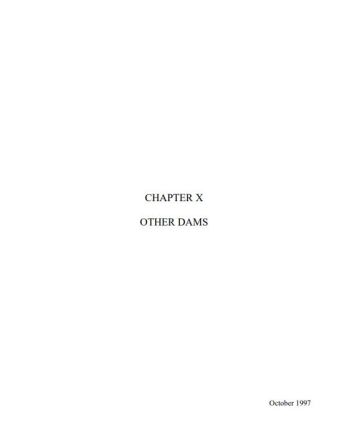Engineering Guidelines for the Evaluation of Hydropower Projects: Chapter 10- Other Dams
Federal Energy Regulatory Commission, 1997

The guidelines presented in this chapter provide staff engineers with recommended procedures and criteria to be used in reviewing and evaluating the safety of the following types of dams:
- buttress dams;
- concrete dams on pile foundations;
- concrete dams on soil foundations;
- timber dams;
- inflatable dams;
- stone masonry dams;
- water retaining power plant structures;
- cellular sheet pile structures; and
- mechanically stabilized earth dams;
The staff engineers' review will be conducted to ensure that all decisions, methods, and procedures performed by licensees/exemptees, or their consultants, are sound regarding dam safety, and to ensure that the Commission's Dam Safety Program objectives as stated in Part 12 of the Commission's Regulations are consistent with accepted up-to-date procedures (the term licensees also refers to exemptees or applicants for license or exemptees from license where appropriate).
Safety evaluation of both new and existing dams presents special and unique problems. Existing dams may prove difficult to analyze especially in those instances where the dam was designed before the development of modern design and construction technology or where adequate records of design, construction, and material properties are not available, such as for timber dams, masonry dams, and piles. Existing dams should be viewed in light of knowledge of studies and reports on similar dams of the same vintage to gain an understanding of probable design and construction methods.
The objective set forth in this chapter is to provide systematic procedures for performing staff evaluations. It is not intended to generate any new philosophy or theories on the methods used to analyze these structures. Existing Bureau of Reclamation and Corps of Engineers literature as well as other readily available references have been used.
Revision ID: 5864
Revision Date: 12/16/2022
